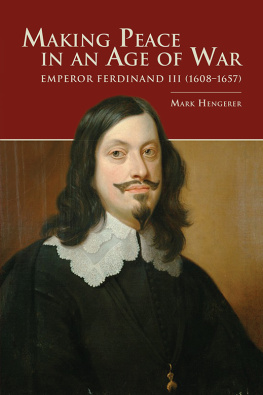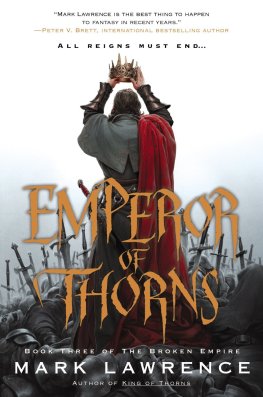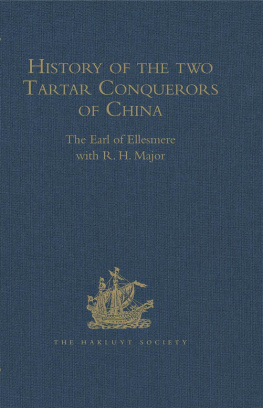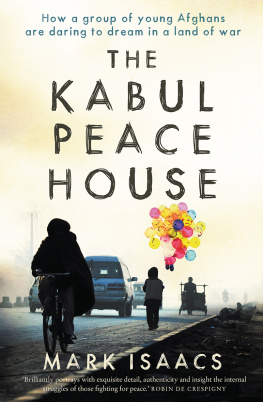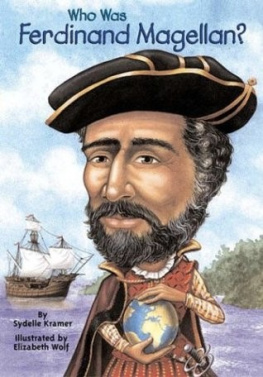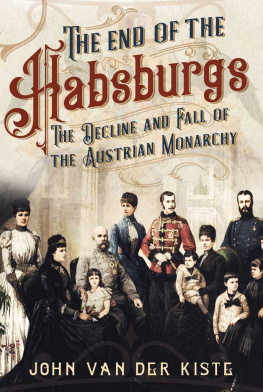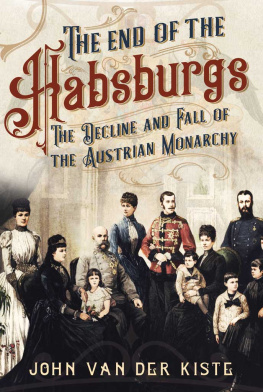MAKING PEACE
IN AN AGE OF WAR
Central European Studies
Charles W. Ingrao, founding editor
Paul Hanebrink, editor
Maureen Healy, editor
Howard Louthan, editor
Dominique Reill, editor
Daniel L. Unowsky, editor
Nancy M. Wingfield, editor
The demise of the Communist Bloc a quarter century ago exposed the need for greater understanding of the broad stretch of Europe that lies between Germany and Russia. For four decades the Purdue University Press series in Central European Studies has enriched our knowledge of the region by producing scholarly monographs, advanced surveys, and select collections of the highest quality. Since its founding, the series has been the only English-language series devoted primarily to the lands and peoples of the Habsburg Empire, its successor states, and those areas lying along its immediate periphery. Among its broad range of international scholars are several authors whose engagement in public policy reflects the pressing challenges that confront the successor states. Indeed, salient issues such as democratization, censorship, competing national narratives, and the aspirations and treatment of national minorities bear evidence to the continuity between the regions past and present.
Other titles in this series:
Universities in Imperial Austria 18481918:
A Social History of a Multilingual Space
Jan Surman
A History of Yugoslavia
Marie-Janine Calic
The Charmed Circle: Joseph II and the Five Princesses, 17651790
Rebecca Gates-Coon
Lemberg, Lww, Lviv, 19141947: Violence and Ethnicity in a Contested City
Christoph Mick
Center Stage: Operatic Culture and Nation Building
in Nineteenth-Century Central Europe
Philipp Ther
MAKING PEACE
IN AN AGE OF WAR
EMPEROR FERDINAND III (16081657)
MARK HENGERER
TRANSLATID BY ELKE SOLIDAY
PURDUE UNIVERSITY PRESS | WEST LAFAYETTE, INDIANA
Copyright 2020 by Purdue University.
Printed in the United States of America. All rights reserved.
Cataloging-in-Publication data is on file at the Library of Congress.
Paperback ISBN: 978-1-55753-844-4
ePub: ISBN 978-1-61249-592-7
ePDF ISBN: 978-1-61249-593-4
Originally published in German as Kaiser Ferdinand III. (1608-1657) Eine Biographie by Mark Hengerer. 2012 Bhlau Verlag GmbH & Co. KG, Wien Kln Weimar. All rights reserved.
This book was made possible with support from the University of Konstanzs Cluster of Excellence, Cultural Bases of Integration, established within the framework of excellence initiatives by the German federal and state governments.
Cover image: Ferdinand III, oil painting by Jan van den Hoecke.
Courtesy of Vienna, Kunsthistorisches Museum.
CONTENTS
Emperor Ferdinand III ended the Thirty Years War, saved the Habsburg Monarchy from peril, and consolidated a confessionally pacified as well as constitutionally stabilized Holy Roman Empire. However, unlike the heroes and villains giving life to the opening phases of this terrible war, he belonged quite a while to the figures ignored by posterity (Peter Wilson, The Thirty Years War: Europes Tragedy, 2009, xxiii), those who did not spectacularly start but who laboriously solved the seemingly indissoluble commixture of inherited civil and international wars. On the occasion of the fourth century of the later emperors year of birth, Lothar Hbelt published a biography of Ferdinand III in 2008 (Ferdinand III. (1608-1657) Friedenskaiser wider Willen). The original version of this book (Kaiser Ferdinand III. (1608-1657) Eine Biographie), completed in the same year, appeared only in 2012 because the recording of music for Ferdinand III attached to the book had to go through a legal odyssey. Meanwhile, important German experts have, on the occasion of the fourth century of the outbreak of the Thirty Years War, published studies on this conflict, such as Johannes Burkhardts Der Krieg der Kriege. Eine neue Geschichte des Dreiigjhrigen Krieges (2018), Georg Schmidts Die Reiter der Apokalypse. Geschichte des Dreissigjhrigen Krieges (2018), Heinz Duchhardts Der Weg in die Katastrophe des Dreiigjhrigen Krieges. Die Krisendekade 1608-1618 (2017), and Herfried Mnklers Der Dreissigjhrige Krieg. Europische Katastrophe, Deutsches Trauma 1618-1648 (2017). However, Peter Wilson (ibid.) is still right when he points out that the last thirteen years of the wara period that largely coincides with the reign of Ferdinand IIIis generally compressed into a quarter of less of the text, much of which is devoted to discussing the peace and aftermath. If Wilsons The Thirty Years War and Joachim Whaleys Germany and the Holy Roman Empire (2012) still stand out as fundamental works, and if Robert Bireleys Ferdinand II, Counter-Reformation Emperor, 1578-1637 (2014) does indeed fill the gap for this influential Austrian Habsburg Ruler (viii), there is place for an English biography of this emperors pathbreaking yet overshadowed successor.
Older publications on Ferdinand III are rare. The first historical account, the Historia Di Ferdinando Terzo Imperatore, a comprehensive volume in folio, was published in 1672 by Galeazzo Gualdo Priorato in Vienna and deals primarily with the reasons for the Thirty Years War and with Ferdinand II, with whose death in 1637 it ends. Matthias Koch released a history of the Empire under the reign of Ferdinand III in two volumes (Geschichte des Deutschen Reiches unter der Regierung Ferdinands III, 18651866) that draws a rather positive image of the emperor; as it was still common, the focus lay on military and political events and deeds. Only in the last third of the twentieth century, several series of editions of sourcesespecially the Documenta Bohemica Bellum Triennale Illustrantia, the Acta Pacis Westfalicae, and the Briefe und Akten zur Geschichte des Dreiigjhrigen Kriegesas well as a seminal series of (mainly) monographs on the Peace of Westfalia (Schriftenreihe der Vereinigung zur Erforschung der Neueren Geschichte) enabled researchers to reconsider the setting of Ferdinand IIIs life.
Konrad Repgens call for the exploitation of private material, made in a balanced biographical article on Ferdinand III in an influential compendium (Die Kaiser der Neuzeit 1510-1918, 1990), led me to the Haus-, Hof- und Staatsarchiv in Vienna, where I started reading the emperors calendars in 1994, and to Rome, where I consulted young Ferdinands pieces of homework on Aristotle, the Mirror for Princes dedicated to him, and other sources, mainly on the Court. Inspired by Robert J. W. Evans pioneering The Making of the Habsburg Monarchy, 1550-1700, by approaches of cultural history as well as systems theory, I focused on the social and organizational transformation of the Imperial court in the sixteenth and mainly seventeenth centuries (Kaiserhof und Adel. Eine Kommunikationsgeschichte der Macht in der Vormoderne, 2004) before coming back to the person of Ferdinand III. As is Robert Bireleys book on Ferdinand II, this book on Ferdinand III is based mainly on archival sources from Rome, Vienna, Munich, and Stockholm. Hbelts biography dwells on a wide range of primary sources, too, and provides a detailed history of events, but it makes use of metaphors and hyperboles to such a degree that a serious discussion seems unexpedient, even if he is comprehensive in the field of military history (see also his book Von Nrdlingen bis Jankau. Kaiserliche Strategie und Kriegfhrung 1634-1645

